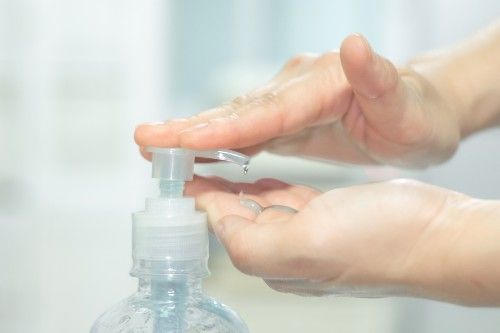Amazon Accused of Price Gouging Hand Sanitizers Amid COVID-19 Spread
A case of 12 one-ounce bottles was being sold by one lister for $3,892.84, which equals just over $324 per ounce.

Even though the US Food and Drug Administration this year took umbrage with claims made by the makers of Purell hand sanitizers, that doesn’t seem to have dissuaded some Amazon buyers fearful of COVID-19 from paying exorbitant amounts for the products on the online retailer’s website. For instance, a pack of 2 8-ounce bottles of Purell was being sold for more than $100, according to Bloomberg. Some of the listings falsely claim to be a treatment, cure, or remedy for the coronavirus, CNBC reports.
Amazon responded that it’s doing the best it can, saying last week that it removed or blocked more than 1 million products because of price gouging and misleading claims about activity against coronavirus. Amazon argues that it monitors reseller pricing that violates its policies. Amazon has about 5 million sellers on its site, and 50% of its sales are by third-party sellers, according to Forbes.
Amazon’s efforts and protestations don’t seem to cut it with California Gov. Gavin Newsom, though, who blasted the company in a tweet showing a photo of a case of 2-ounce Purell brand sanitizers listed on the site for $400. Newsom tweeted: “Keeping your hands clean will help prevent the spread of coronavirus. Seriously, @amazon? These prices are absurd.”
Newsweek checked the Amazon website and found listings “averaging around $40 for an eight-ounce bottle of Purell, over ten times the typical price. One listing offered a case of 12 one-ounce bottles for $3,892.84, which equals just over $324 per ounce.”
An Amazon spokesperson told news outlets: “There is no place for price gouging on Amazon. We are disappointed that bad actors are attempting to artificially raise prices on basic need products during a global health crisis and, in line with our long-standing policy, have recently blocked or removed tens of thousands of offers. We continue to actively monitor our store and remove offers that violate our policies.”
Amazon is removing listings for overpriced items, but new listings continue to be added almost as fast as old ones are taken down, Newsweek reports.
Amazon’s third-party sellers have been debating the price-gouging accusations on the Amazon sellers’ forum pages. As Forbes reports, some of those sellers argue that the price hikes simply reflect the laws of supply and demand.
Dana Radcliffe, senior lecturer of business ethics at Cornell’s SC Johnson College of Business, tells Forbes that the problem with that attitude is “in emergencies where critical supplies are scarce, the conditions of a ‘free and fair market’ don’t exist-since the buyers don’t have options.”
Washing hands with soap and water is a better hand hygiene method, according to the US Centers for Disease Control and Prevention (CDC). The CDC says that “alcohol-based hand sanitizers don’t kill ALL types of germs.” In addition, “Hand sanitizers also may not remove harmful chemicals, such as pesticides and heavy metals like lead. Handwashing reduces the amounts of all types of germs, pesticides, and metals on hands.”
Earlier this year, the FDA fired off a warning letter to GOJO Industries, Purell’s parent company, citing claims made on some of the company’s online platforms that its products can reduce disease from the Ebola virus, norovirus, and influenza. The FDA wanted Purell to notify the agency about specific steps it is taking to rectify the violations.
Samantha Williams, GOJO’s senior director of corporate communications said that the company took “immediate action” upon receiving the FDA letter.
“It is important to emphasize that the FDA letter was not related to the safety or quality of our products, or our manufacturing processes,” Williams said. “Our products can and should continue to be used as part of good hand hygiene practice, to reduce germs.”
“Ongoing Assault”: How HHS Layoffs Have Eviscerated Infection Prevention Support Across the Nation
April 1st 2025Mass layoffs at HHS and CDC have gutted critical infection prevention programs, leaving frontline professionals overwhelmed, under-resourced, and desperate to safeguard public health.
The Guardians of Animal Health: Who Are Veterinary Infection Preventionists?
March 21st 2025Veterinary infection control experts Leslie Kollmann, BS, AAS, CVT, CIC, Denise Waiting, LVT, and Leslie Landis, LVT, BS, discuss challenges, zoonotic disease risks, and the importance of education, collaboration, and resource development in animal care facilities.